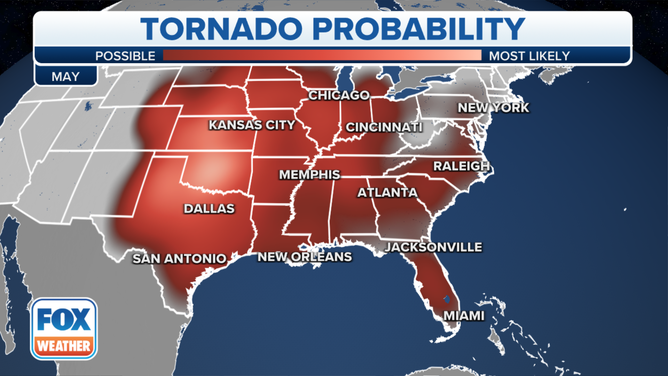Gas prices impacting the price of storm chasing
An average tornado season could cost a storm chaser over $7,000
DALLAS – As gas prices continue to spike in record territory, the bill for storm chasers may act as a road bump as they try to capture stunning images and data of some of Mother Nature’s most destructive forces.
Each year, the U.S. sees around 1,300 tornadoes, with hundreds of storm chasers capturing the sights during the spring and summer months.
An average day for a weather enthusiast means driving some 500 miles to 1,000 miles on mostly rural roads in the Plains, which means stopping a couple of times at a gas station to fill the tank.
"As far as I can remember, it’s the highest I’ve ever seen," Tim Marshall, an engineer and meteorologist with Haag Engineering, said about the gas prices.
He estimates an average chase day, with gas prices near $5 a gallon, will cost him around $175 in fuel.
Marshall believes a busy season could end up costing $10,000 or more when bills for lodging, meals and gasoline are combined.
HOW TO WATCH FOX WEATHER ON TV
While some chase for the thrill, others such as Marshall are in the field collecting essential data to further the advance of science.
"We have to pass to cost off to our clients because it’s going to cost more for us to go out chase," Marshall said.
Marshall has been chasing tornadoes and hurricanes since the late 1970s, and despite encountering more than 300 tornadoes, he said only about one out of any ten chases yields a significant tornado.
The veteran storm chaser believes some weather enthusiasts will carpool and cut back on lodging costs in order to keep chases within budget.
"Some of the chasers have said, ‘well, you should get a more fuel-efficient vehicle.’ Well, that’s easier said than done," Marshall stated.
The future of storm chasing
Jeff Piotrowski of twisterchasers.com is considered a trailblazer in the industry and is the only one of a few to chase using an electric vehicle.
"You got to do a lot of planning," Piotrowski said. "Out here in the Plains, the charging stations aren’t as close as you would like."
Piotrowski drives his electric Nissan Leaf for only around half the chases due to the long distance the hunt might last.
"You need a bigger battery and longer range in order to compensate, which isn’t widely available right now," Piotrowski said.
The storm chaser believes Tesla’s Cybertrucks will revolutionize the industry when they become available and allow drivers to go 500 miles before the need to recharge.
Piotrowski said some of the pain at the pump now will reverse itself when electric vehicles become viable options for storm chasers.
"Your insurance is less on an electric car than it is on a gas-powered vehicle. You don’t have the oil changes or transmission changes," Piotrowski said.
Both Marshall and Piotrowski believe chasers will find ways to adapt in the short term, especially with the heart of tornado season just weeks away.
HERE’S WHERE TORNADOES ARE MOST LIKELY TO OCCUR IN EACH MONTH

May tornado probability
(FOX Weather / FOX Weather)